Louis Erard is one of those Swiss watch brands that may have registered on your radar only recently — earning both enthusiast buzz and critical acclaim in the past few years thanks to its very high-profile partnerships with indie watchmakers whose own timepieces might otherwise be unattainable. How did Louis Erard, which actually traces its origins all the way back to the Great Depression, manage to finally find its niche in the 21st Century?
Family Foundations
Born in 1893 in La Chaux-de-Fonds, a historical hub of Swiss watchmaking, Louis Erard discovered his horological vocation early. In the early 1900s, he began plying his trade as a watchmaker for several of the town’s workshops, and in 1929 founded a watchmaking school where he served as instructor. At the same time, Erard started a watchmaking business with a partner named André Perret, originally as an “assembler” of complete timepieces for third parties using parts supplied by independent artisans. By 1931, the partnership was dissolved and Erard became a producer of watches under his own eponymous brand name. The company grew in the following decades, with Erard’s two sons, René and Jean-Louis, joining in 1945. Among the company’s milestones during this early period was helping to develop the now-legendary Valjoux 72 chronograph caliber.

In 1956, Louis Erard, which still used third-party movements in its own watches, advanced to the next stage of horological prestige, starting production of its own watch movements. The third generation of the founding family, Louis’s grandson Paul Erard, came onboard in 1969, and his business acumen helped steer the firm through the difficult Quartz Crisis years of the 1970s. The company continued making contributions on the technical side in the 1980s, adding functions to another historically important movement, the Peseux 7001, including a power reserve indicator and a regulator-style timekeeping display — the latter of which would become a hallmark of the Louis Erard brand going forward.
Enter Mr. Emch
The family-owned watch company changed hands in 1992 and moved from the Erards’ hometown of La Chaux-de-Fonds to Le Noirmont, in the Franches-Montagnes district of the canton of Jura. Another ownership change in 2003, by a group of investors headed by veteran watch-industry entrepreneur Alain Spinedi, put the venerable brand on a stronger footing, with a new focus on the underserved “mid-range” segment of the Swiss luxury watch industry — defined loosely as mechanical watches with high-end execution and finishing, priced over $1,200 and under $4,000. The new era also brought an emphasis on the timekeeping style that Louis Erard had helped popularize among watch connoisseurs several decades prior, the regulator dial.

To further hone and execute the 21st Century strategy for Louis Erard, Spinedi brought on board Manuel Emch (above), a watch-industry executive with an impressive and eclectic pedigree. At age 29, Emch was appointed brand president of Jaquet Droz, one of the Swatch Group’s most elite haute horlogerie houses, becoming the youngest to hold that position in the parent company’s history. After nine years at the helm, in which he played a lead role in forming Jaquet Droz’s modern identity, Emch moved up to a seat on the Swatch Group’s international management team. In 2010, he took on a new challenge as the CEO of Romain Jerome (later shortened to “RJ”), an independent brand known for its iconoclastic approach to watch design and high-end collaborations with pop cultural institutions like Spider-Man, Batman, Super Mario and Pokémon. In 2018, Emch started his own consulting firm, Le Büro, which brought him into the orbit of Spinedi and led to his current role as Strategic Director of Louis Erard. “As someone deeply entrenched in the luxury watch industry, Louis Erard intrigued me for a compelling reason,” Emch says. “It offered the opportunity to explore a new territory: the accessible price segment, and to leverage my expertise to inject innovation and creativity into the brand. It’s a challenge that I’m eager to tackle.”
Rallying ‘Round the Regulator
Speaking of challenges: at first glance, the regulator dial that underpins so many of Louis Erard's watch designs might be a bit confusing to the uninitiated; its sheer unconventionality might make one think that it’s some newfangled idea by one of today’s wildly experimental watch designers. However, it’s actually the continuation of a tradition that goes back to the early days of watchmaking in the 18th and 19th centuries. The so-called regulator clocks of that era were designed with all of the hands operating independently on a vertical axis; the minutes hand was the largest, placed prominently in the center, while the hours and seconds ticked away on separate subdials, usually in parallel balance at 12 and 6 o’clock. Such clocks, often found in watchmaking workshops and eventually in railroad stations, and ideally displayed in a prominent place for all to see, enabled watchmakers to adjust the hands on their watches so that all the timepieces were working from the same central “regulated” time. While this type of display was not then, nor is it now, the most intuitive way of reading the time, it does place an emphasis on accuracy and precision; the minute hand is the center of attention because it is the most important one for most of us when we’re checking our watch; most of the time we are aware of what hour of the day we’re in and precise seconds only matter if we’re in a race or some other type of competition.

Louis Erard (along with a much younger brand, Chronoswiss) was one of the first watchmakers to adopt a regulator design for wristwatches (early example above), starting with its landmark modification of the Peseux 7001 caliber in the 1980s. “The regulator dial stands out as the centerpiece of numerous pieces in our collection,” Emch confirmed. “Personally, I’m deeply passionate about this small yet practical complication because it provides ample room for creativity and innovation.”
Partners of Distinction

Right out of the gate, Emch sought out some of the rock stars of independent watchmaking to provide the aforementioned creativity and innovation — names revered in the collector community that would inevitably draw attention to what the refurbished brand was doing. One of the first, in 2019, was Alain Silberstein (above), a French watch designer and architect, known for his Bauhaus-influenced pieces dominated by bright primary colors and geometric shapes, and a frequent collaborator with established brands on special editions. ”Collaborating with designer brands like MB&F, with Maximillian Büsser, and Bell & Ross, with Bruno Belamich and Carlos Rosillo, is akin to playing a piano duet, crafting a melody from an existing watch by weaving harmony around a simple idea through colors, shapes and materials,” Silberstein commented. “Collaborating with Louis Erard was a different experience. Manuel Emch… granted me complete creative freedom to craft a distinct case and dial/hand language specific to Louis Erard.”
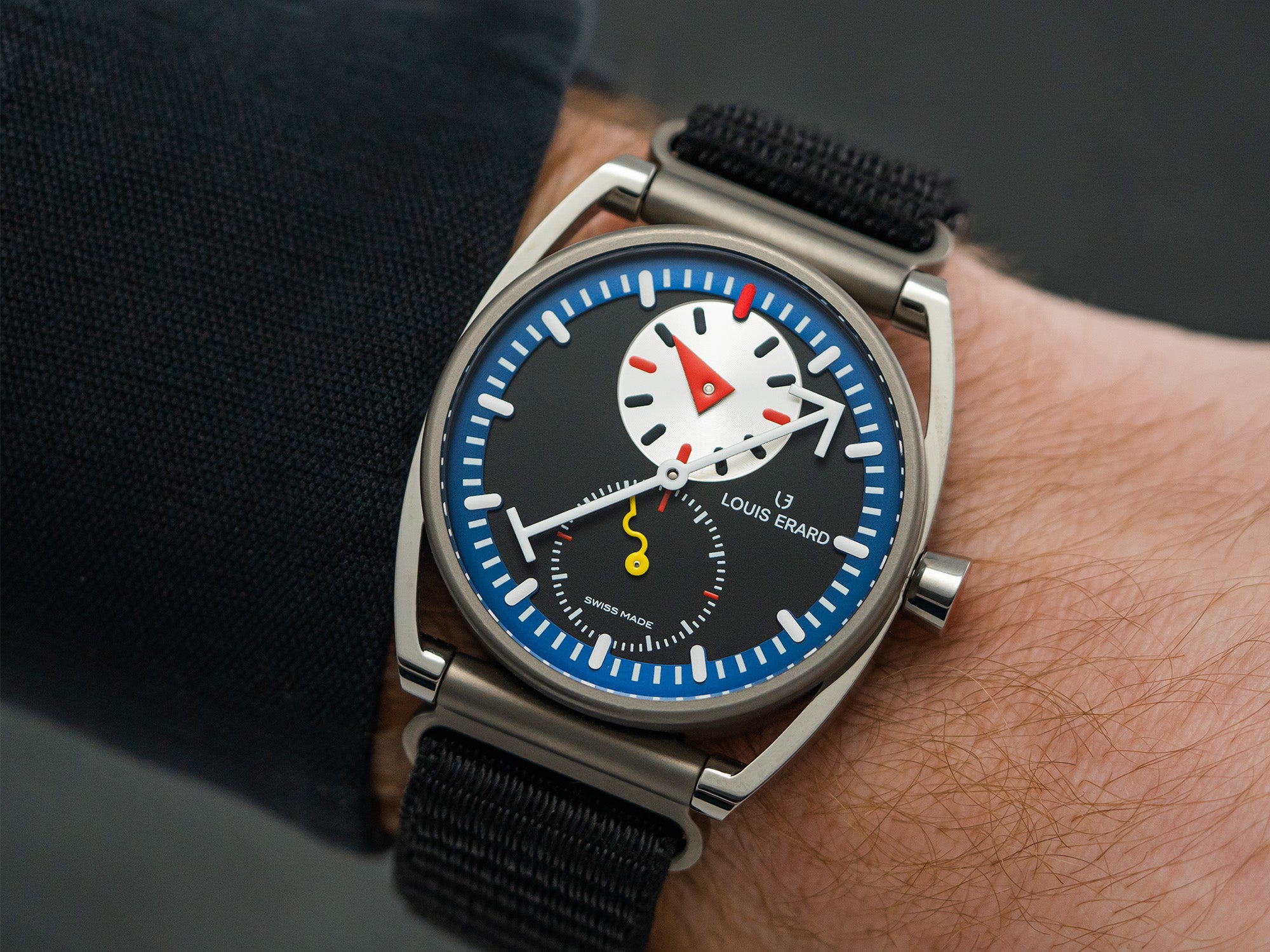 Silberstein’s first-ever regulator watch, conceived in 2019, teased in 2020, and finally released in 2021, was a timepiece that simultaneously flaunted the design carte blanche that the French iconoclast was handed and boldly announced that the “new” Louis Erard had arrived. Its steel case, with a matte black PVD finish, contained the automatic ETA 7001 (the modern version of the Peseux 7001), and its black dial was pure Silberstein exuberance: a yellow arrow for the central minute hand, a red triangle for the hours, a blue serpentine squiggle for the running seconds, plus an analog power reserve display at 9 o’clock with a “red zone” indicator. The 178 pieces of the original Excellence Le Regulateur Louis Erard x Alain Silberstein — winner of the prestigious Red Dot Award for product design — sold out, setting the stage for more collaborations, with Silberstein and others, to come, including coveted models conceived with Vianney Halter, Eric Giroud, and Label Noir.
Silberstein’s first-ever regulator watch, conceived in 2019, teased in 2020, and finally released in 2021, was a timepiece that simultaneously flaunted the design carte blanche that the French iconoclast was handed and boldly announced that the “new” Louis Erard had arrived. Its steel case, with a matte black PVD finish, contained the automatic ETA 7001 (the modern version of the Peseux 7001), and its black dial was pure Silberstein exuberance: a yellow arrow for the central minute hand, a red triangle for the hours, a blue serpentine squiggle for the running seconds, plus an analog power reserve display at 9 o’clock with a “red zone” indicator. The 178 pieces of the original Excellence Le Regulateur Louis Erard x Alain Silberstein — winner of the prestigious Red Dot Award for product design — sold out, setting the stage for more collaborations, with Silberstein and others, to come, including coveted models conceived with Vianney Halter, Eric Giroud, and Label Noir.
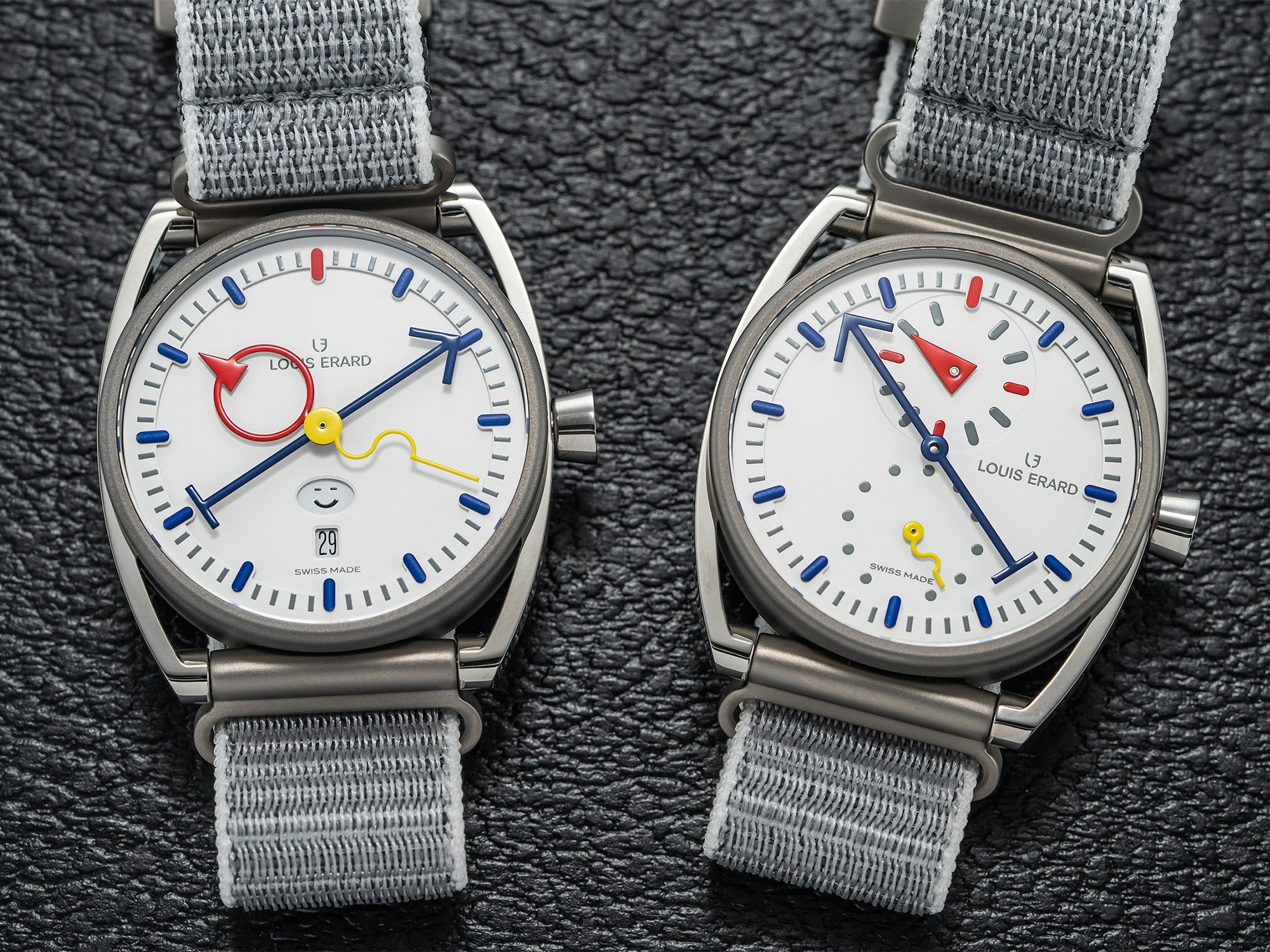
Silberstein has become the most frequent partner from that elite community, and his co-branded Louis Erard timepieces have explored realms beyond the regulator. The “Le Diptyque” release from 2022 (above), identified by white dials, titanium cases, and gray textile straps, includes a Le Regulateur model as well as a signature style from Silberstein’s own portfolio, the “La Semaine” weekly calendar, also known as the “Smiley” calendar, with emoji-evocative cartoon faces marking the days in an aperture at 6 o’clock — Sunday is happy, Monday is gloomy, et cetera.
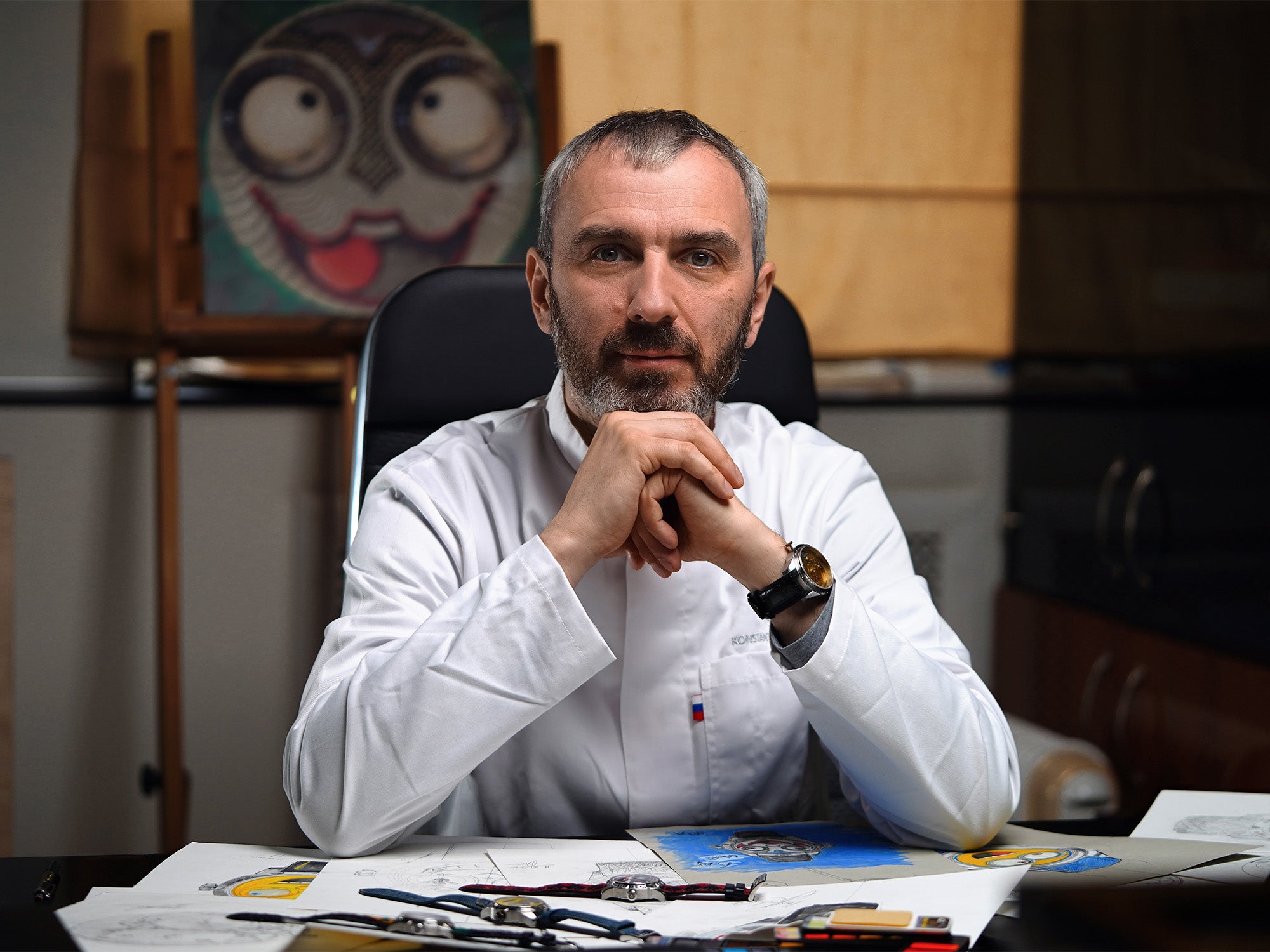
An even more unconventional — actually, downright weird — take on the classic regulator dial emerged from Louis Erard’s partnership with another in-demand indie watchmaker, Russia’s Konstantin Chaykin (above), a GPHG award winner for his outlandish Joker watch (you can read about it here). The Le Regulateur Louis Erard x Konstantin Chaykin “Time Eater” models (below) take their inspiration from a legendary nightmare figure from Slavic folklore, joining Chaykin’s series of wrist monsters or “Wristmons.”

"The challenge was integrating the Wristmon's anthropomorphic traits with the familiar look of a Louis Erard regulator," Chaykin explains. "The solution was elegantly straightforward: a one-eyed Wristmon! I placed the hour indicator at the 12 o'clock position representing an 'eye,' while the seconds remained at the 6 o'clock position, acting as a 'mouth,' and the minutes were indicated by the central hand. The round shape of the Louis Erard seconds indicator, resembling an open mouth with teeth, inspired this slightly menacing characterThe monster’s single Cyclopean eye, white with red veins on the first model, serves as the hour disc at 12 o’clock; the central minute hand is tendril-shaped, and the star-shaped seconds disk evokes a parasitic maw with sharp teeth. It embodies elements of the Russian folk tale character One-Eyed Likho; the ancient god of time Chronos, who devours his offspring; the one-eyed Cyclops; and the Langoliers, the 'time eaters' from Stephen King's story, hence the name 'Time Eater.'" All the watches are limited editions, in an assortment of colorways, with stainless steel cases available in both 39m and 42mm sizes, and equipped with an automatic Sellita SW266 movement. The straps are just as off-the-beaten-path as the watches, made of toad leather with rabbit-fur inner lining.
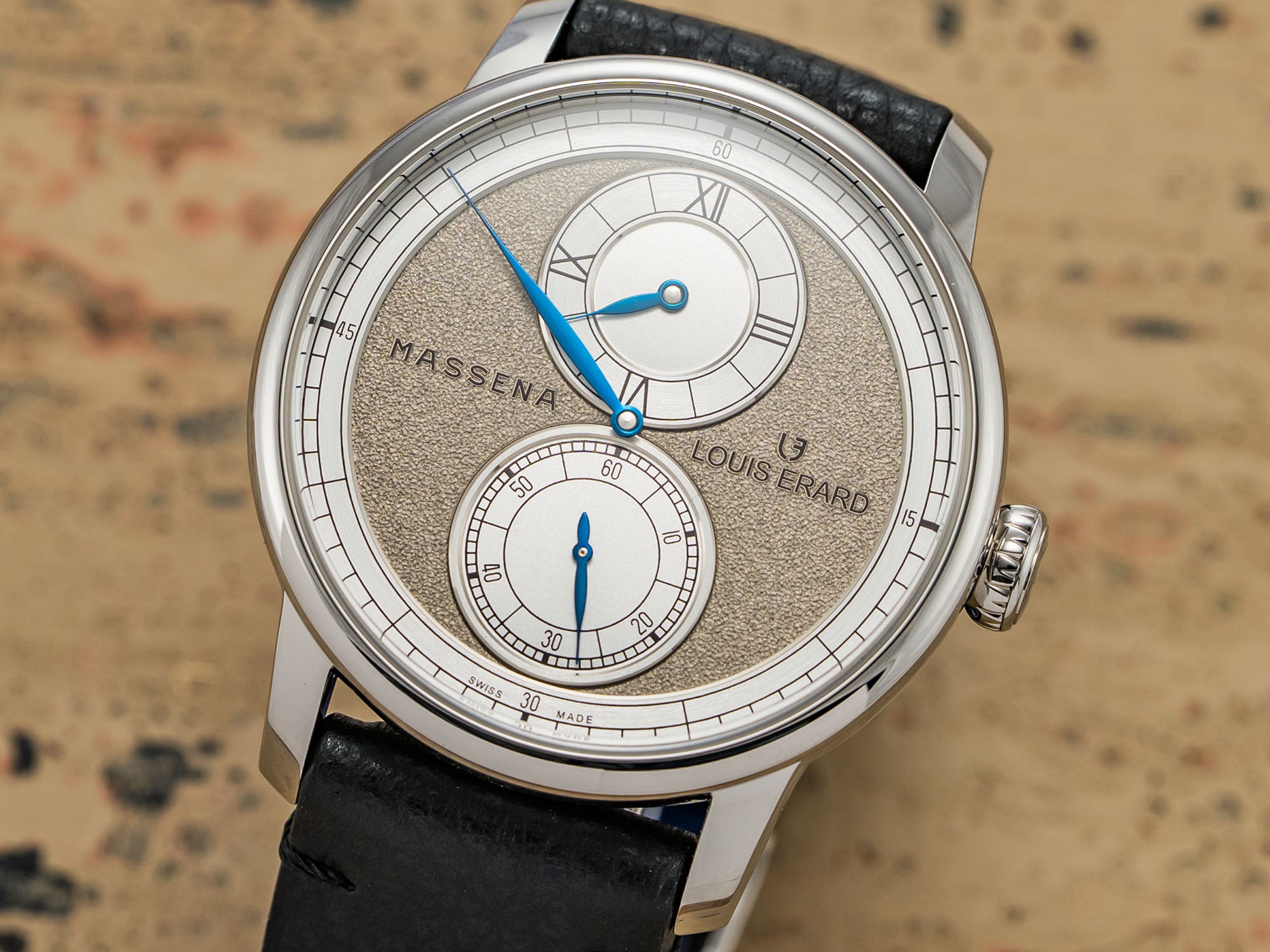
When noted watch collector and former Antiquorum CEO William Massena founded Massena LAB in 2018, he envisioned it as a dynamic platform for watchmaking collaborations, a business model akin to an independent movie studio working with auteur filmmakers. A collaboration with Louis Erard fit this bill perfectly, and the watch that resulted, influenced by the work of 18th-Century French clockmaker Antide Janvier, is an undeniably elegant fusion between a Louis Erard Regulator watch and a classical marine chronometer. The two-level dial has a grained finish, in either 2N gold or rhodiumed silver tone, while the two subdials at 6 and 12 o’clock feature opaline centers bordered by rhodium-plated flanges. The depth and contrasting finishes on the dial aids in the legibility of the time on the classically blued, leaf-shaped hands. The automatic regulator-equipped Sellita SW266-1 beats inside the 42mm polished steel case, and both are limited to 178 pieces — a number that Louis Erard chose for many of its limited editions because of its symbolic meaning of "stronger together."
Métiers d’Art
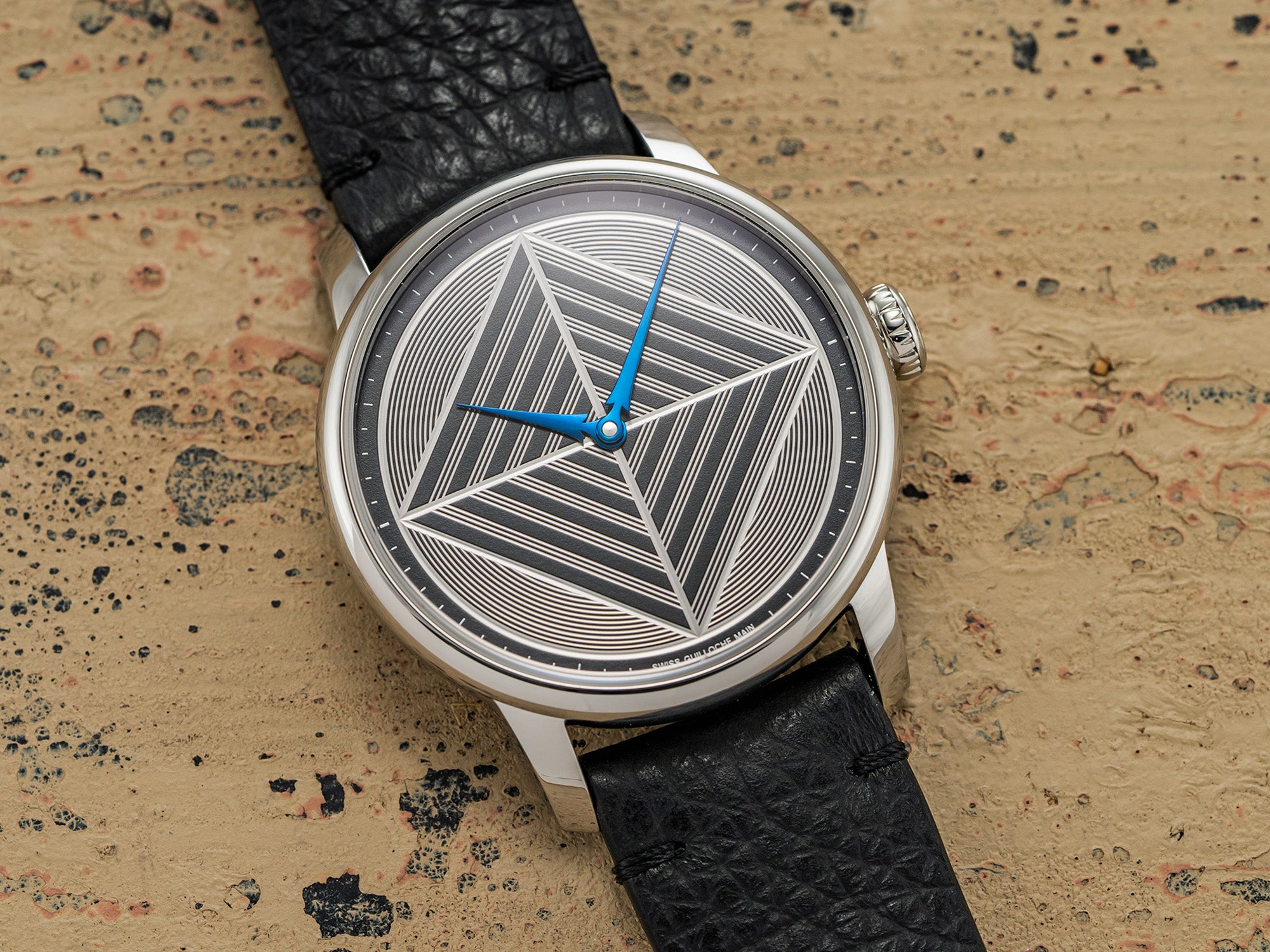
Louis Erard can also take pride in offering an array of artisanal crafts from the history of horology at head-turning, accessible prices. In 2021, the maison released its first Excellence Guilloché Main limited edition, and followed it up with the Excellence Guilloché Main II, limited to 99 pieces, in 2023. “Main,” French for “hand,” refers to the meticulous hand craftsmanship used to create the guilloché texture on the dial — with a single artisan manually guiding a rose-engine lathe. On the piece featured above, the three-hand dial’s central attraction is a large, radiating diamond motif that Emch, an avid patron of the arts, likens to Op Art and the visual styles of Frank Stella and Victor Vasarely. A regulator arrangement would distract from the beauty of the kinetic dial pattern, so Louis Erard opted for a simple two-hand time display on this one — the dial is even sans logo — with the brand’s hallmark “fir tree” hour and minute hands, driven by the automatic Sellita SW261-1 caliber. For an asking price of $4,950, it will surely entice collectors of traditional horological artisanship and savoir faire.
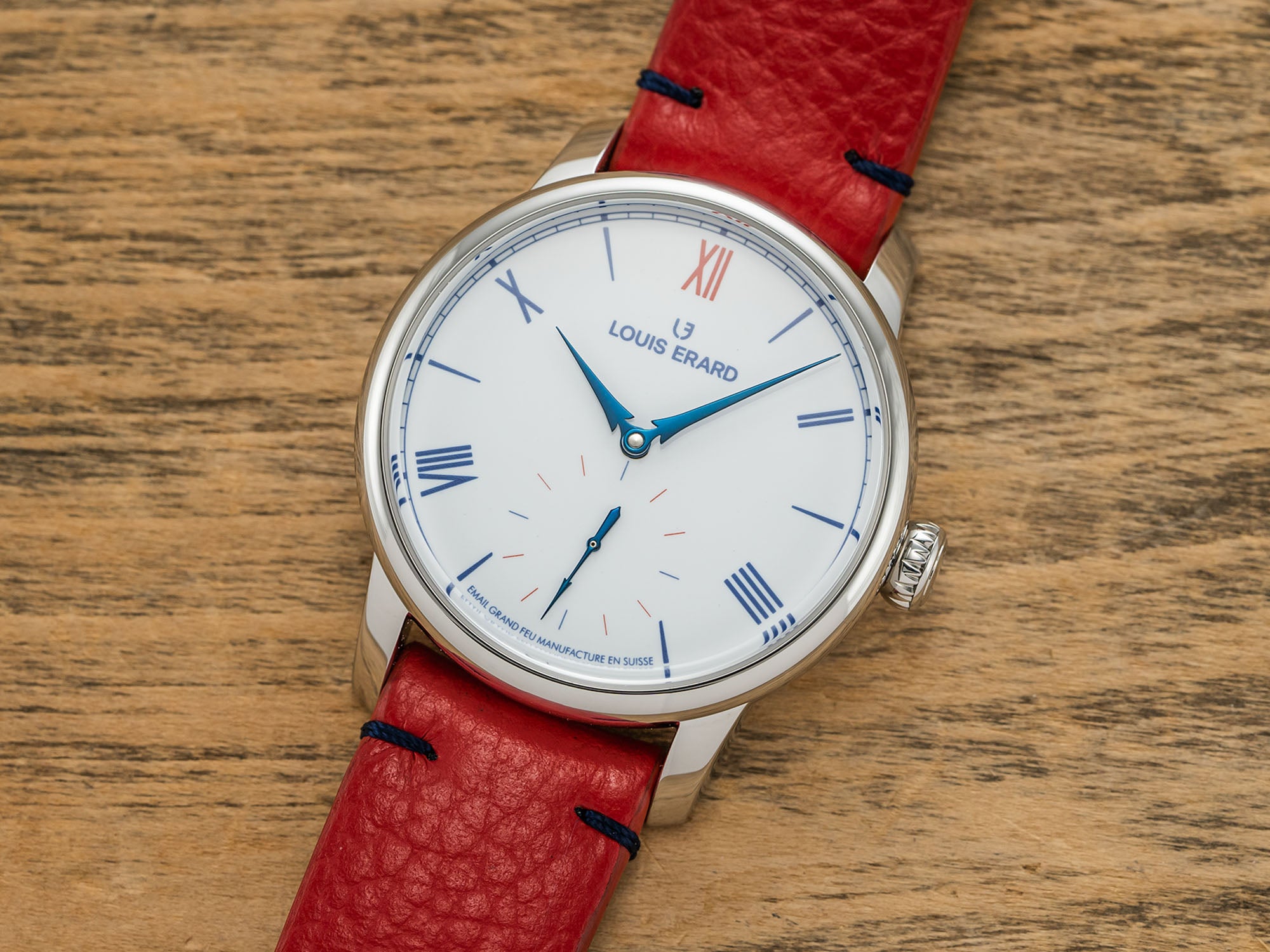
One of Louis Erard’s most elegantly understated timepieces — and another that eschews the regulator design for a more classical display, here with a small seconds subdial at 6 o’clock — is its Excellence Émail Grand Feu II. Émail, for the non French-speakers out there, refers to enamel, not electronic communications, while grand feu (literally “big fire”) refers to the specific type of enamel used for the dial, in which fine powders, one for each of the colors used in the dial’s ensemble, are fired in a kiln at 800 degrees Celsius to achieve a long-lasting brilliance. Also distinguishing the dial of this 99-piece limited edition are the brand’s signature “fir tree” hands and the delicate, blued Roman hour numerals. The steel case measures 39mm and houses an automatic Caliber from Sellita. The watch carries an MSRP around $5,000.
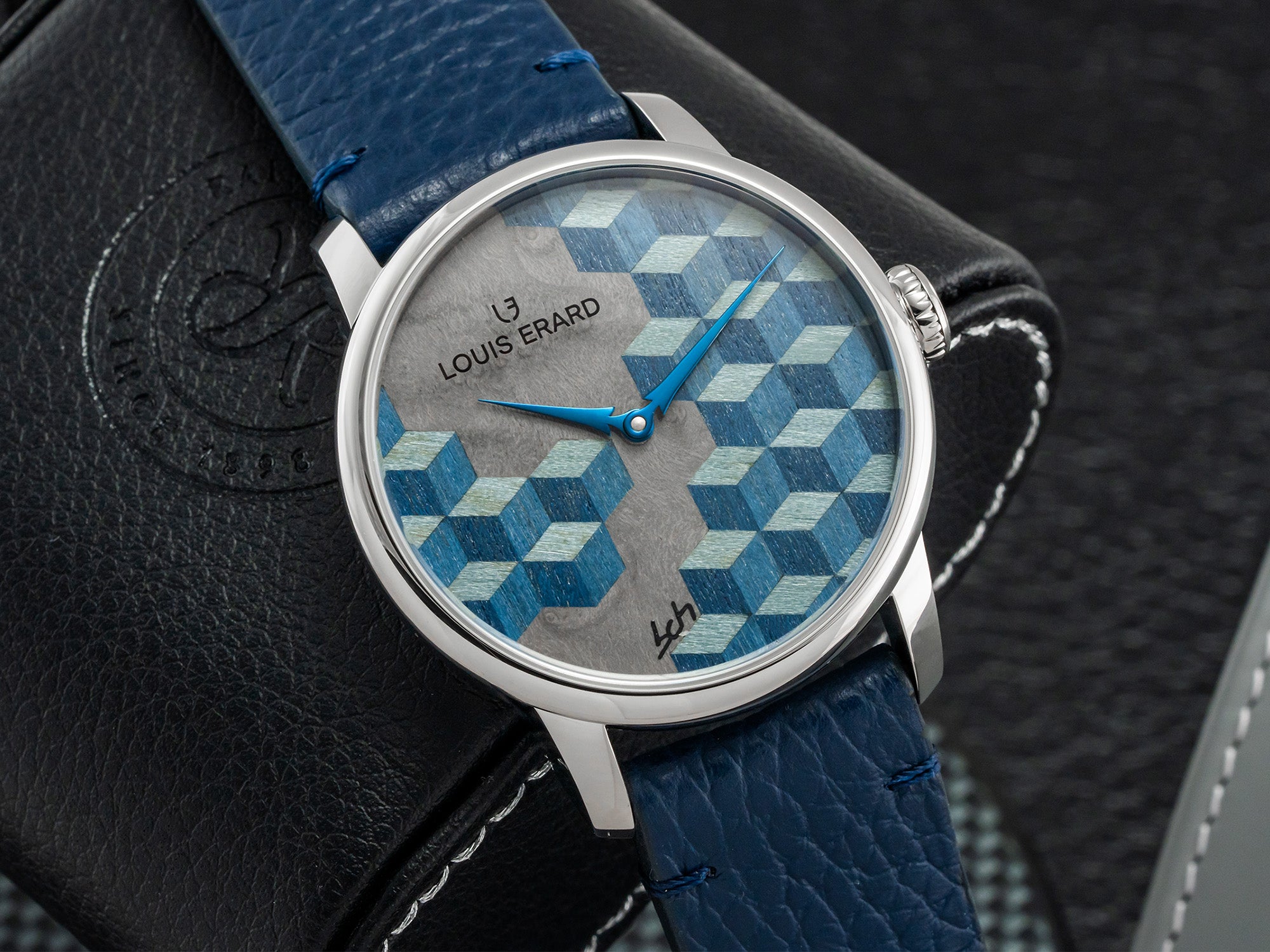
A meeting in Sainte-Croix between Emch and Swiss wood marquetry expert Bastien Chevalier led to another exceptional artisanal timepiece, the 99-piece Excellence Marquetrie. Its eye-popping, geometrically oriented dial is painstakingly constructed from more than 70 tiny pieces of wood — three shades of blue-shaded tulip tree, and gray-tinted willow burl — hand-cut with surgical precision to 1/10 millimeter, deposited with a scalpel tip under a microscope, and carefully assembled like a minuscule jigsaw puzzle to form the 3D trompe l’oeil checkerboard pattern. Chevalier makes each dial himself, even employing a yoga-like technique of conscious breathing to maintain his focus and the steady hand required to complete the task flawlessly. Another two-handed model powered by the Sellita SW261-1, the watch features a polished 42mm case with an clear sapphire back and sells in the U.S. for just shy of $5,000, probably the lowest price ever for a watch with a true wood marquetry dial.
For his part, Manuel Emch appears to believe the magic formula for Louis Erard in the 21st Century is continuing to find those rare synergies between creative talent and rewarding personal relationships. “For me, it’s not just about the end result, the watch, but the shared experience, the journey we embark on together,” he says. “The deeper and more personal our conviction, the more fulfilling and successful the collaboration will be. There’s an exciting journey ahead as we continue to explore and to push the boundaries of design and functionality even further.”


















































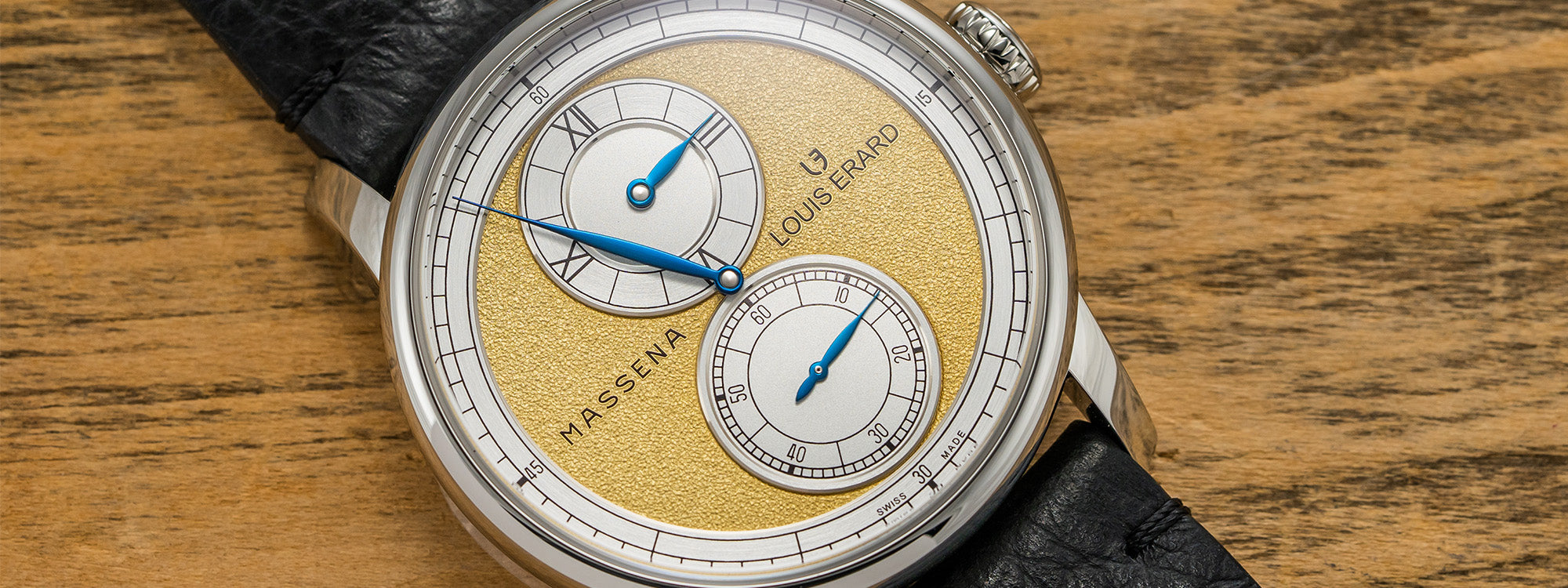


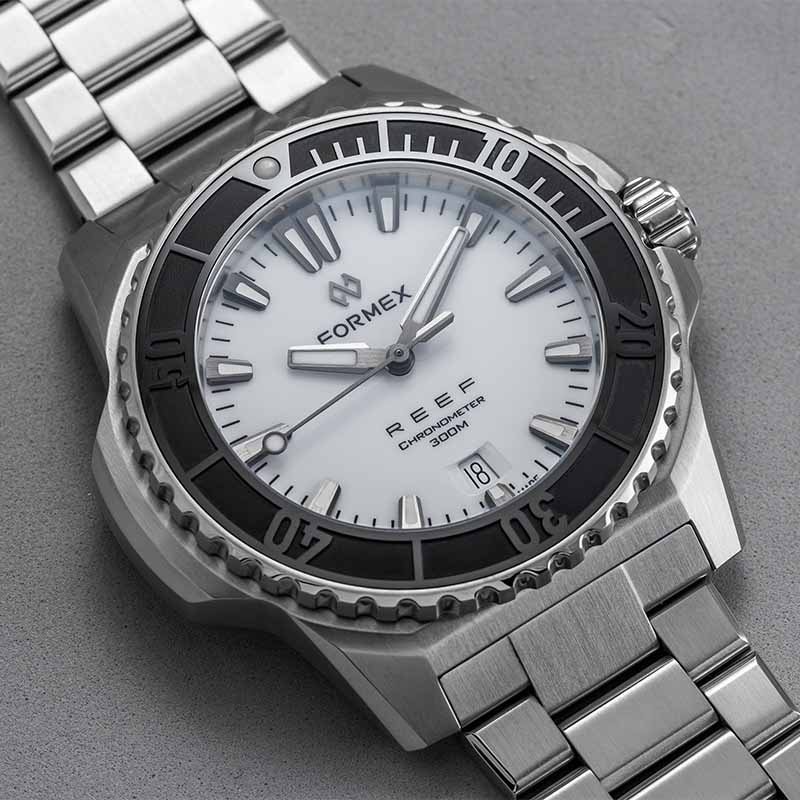
0 Comments